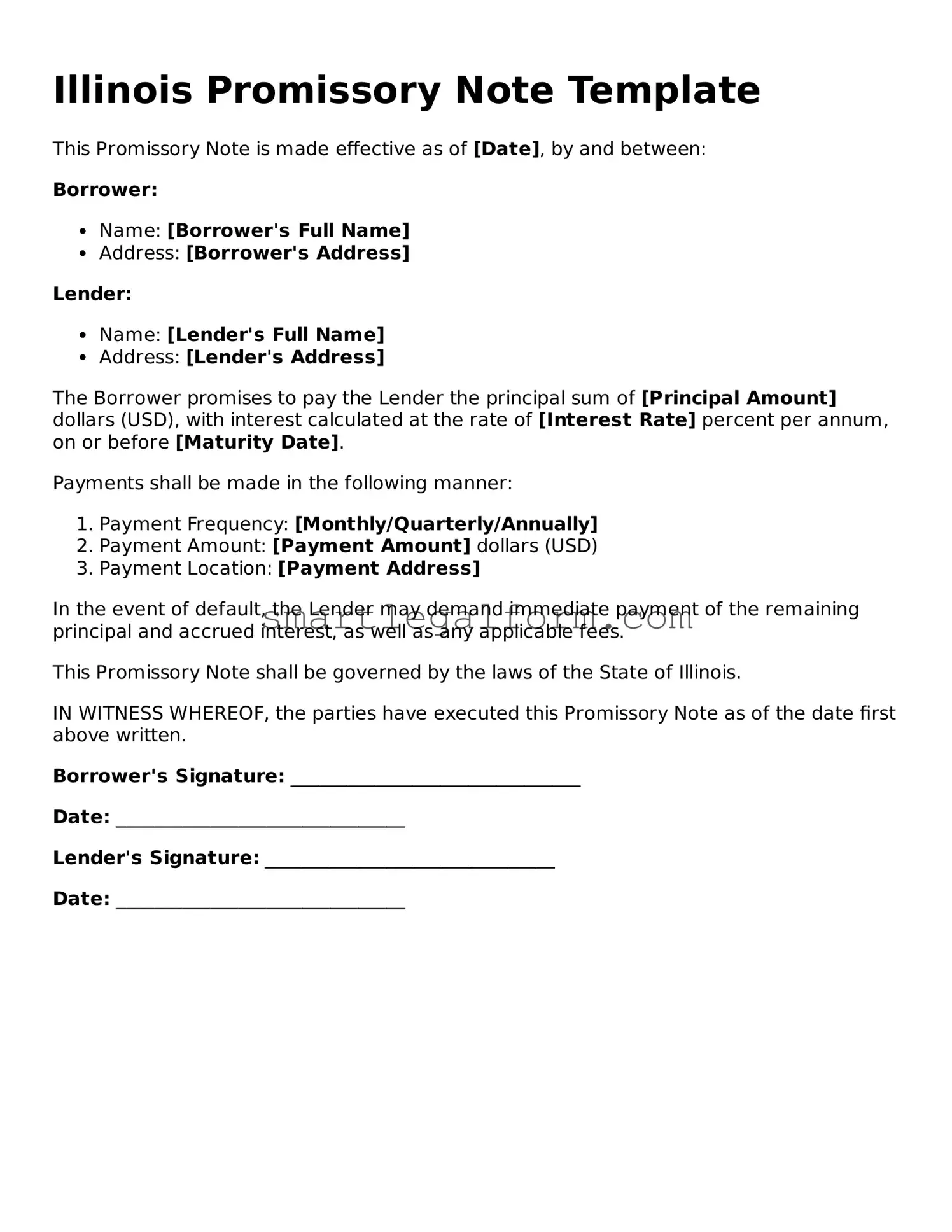Illinois Promissory Note Template
This Promissory Note is made effective as of [Date], by and between:
Borrower:
- Name: [Borrower's Full Name]
- Address: [Borrower's Address]
Lender:
- Name: [Lender's Full Name]
- Address: [Lender's Address]
The Borrower promises to pay the Lender the principal sum of [Principal Amount] dollars (USD), with interest calculated at the rate of [Interest Rate] percent per annum, on or before [Maturity Date].
Payments shall be made in the following manner:
- Payment Frequency: [Monthly/Quarterly/Annually]
- Payment Amount: [Payment Amount] dollars (USD)
- Payment Location: [Payment Address]
In the event of default, the Lender may demand immediate payment of the remaining principal and accrued interest, as well as any applicable fees.
This Promissory Note shall be governed by the laws of the State of Illinois.
IN WITNESS WHEREOF, the parties have executed this Promissory Note as of the date first above written.
Borrower's Signature: _______________________________
Date: _______________________________
Lender's Signature: _______________________________
Date: _______________________________
